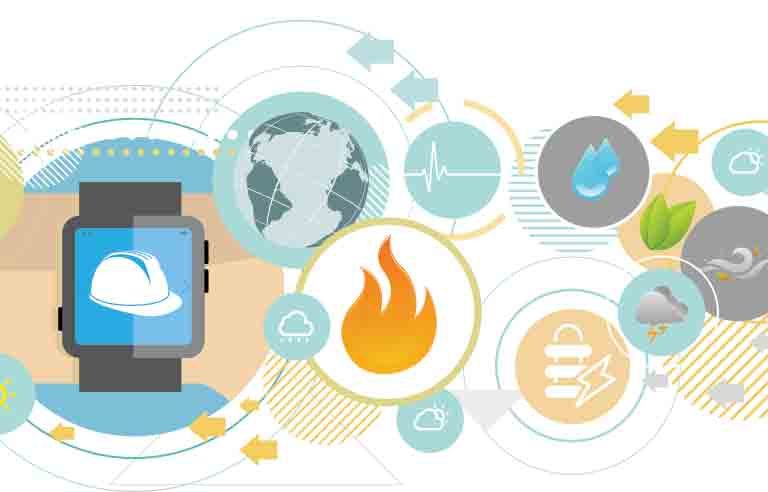Workers and wearables: NIOSH webinar explores ‘opportunities and complexities’ of sensor technology

Washington — From exercise and GPS trackers to devices that measure on-the-job stress, ergonomics or potential exposure to chemicals, wearable sensors have become part of everyday life.
During a Nov. 20 NIOSH Total Worker Health webinar titled, “Where Exposure Meets Sensor Technologies: A Look at the Opportunities and Complexities,” Emanuele Cauda, a senior research engineer at the agency’s Mining Research Division in Pittsburgh; Paul Schulte, director of the agency’s Division of Science Integration; and Jennifer Sahmel, managing principal scientist at Insight Exposure and Risk Sciences Inc., discussed the expanded use, potential benefits and ethical questions surrounding these devices.
“We are living a life where there are sensors everywhere,” Cauda said. “We have smart cities. We have smart houses. We are going to have smart cars quite soon.”
Sensors that monitor fatigue; heat stress; or exposure to noise, gases, vapors and particulates are common on jobsites.
“The reality is that people are exposed to multiple exposures,” Schulte said. “The health of the workforce, which is intimately tied to its effectiveness and productivity, relates to a variety of factors, and we in the occupational safety and health field only look at a limited number of these. We have the potential for making an improved impact on worker health and prevention.”
Schulte discussed the totality of exposures during a worker’s life, known as the “exposome.” By studying a worker’s exposures at work and home, he said safety and health professionals can understand a person’s cumulative risk, exposure severity, probability and effect.
Cauda noted the growing acceptance of sensor technologies, including clothes that collect data, such as smart gloves that detect chemical exposures, smart boots that detect ergonomic issues, wristbands that monitor ultraviolet exposure, hats with temperature and gas sensors, and shirts with sensors inserted.
“The most interesting wearables … for the future are going to be implantable,” said Cauda, who offered examples such as biodegradables that break down after collecting data on injury recovery and contact lenses that measure glucose, as well as ingestible technologies.
Cauda said NIOSH’s Right Sensors Used Right initiative focuses on the selection of appropriate sensors and methodologies to meet mission objectives and the appropriate use of sensors to obtain needed data quickly. An important aspect is defining the objective for using a personal sensor monitor for health and safety, he said.
By collecting more data from workers – on and off the job – Sahmel said safety and health pros can help workers by alerting them to health conditions. However, the ethics and values involved with collecting this data are important to discuss.
“There are many conflicting questions we have to address,” Sahmel said. “Is it unethical to collect sampling data outside the workplace? But, on the flip side, do we have an ethical responsibility to collect this information and share it with workers if we have the technology to do that?”
Data from wearable technologies should be protected vigorously, Sahmel said, and workers deserve to know how it will and won’t be used.
Along with ensuring workers know the safety and transparency of their data, Sahmel said all technologies should be validated for their effectiveness. Employers should begin any sensor program by first seeking volunteers and not making participation mandatory.
“I think people can see we are on the frontier of exciting and daunting times (for) worker safety and health,” Schulte said. “The technology is going to enable us to do a lot of interesting and important things that can be helpful, but there are many dangers. We are going to have to pay attention and not just barge forward.”
Post a comment to this article
Safety+Health welcomes comments that promote respectful dialogue. Please stay on topic. Comments that contain personal attacks, profanity or abusive language – or those aggressively promoting products or services – will be removed. We reserve the right to determine which comments violate our comment policy. (Anonymous comments are welcome; merely skip the “name” field in the comment box. An email address is required but will not be included with your comment.)

